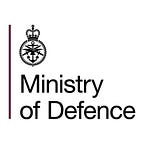What is the Future Combat Air System?
The MOD has announced it has signed a £250 million contract to drive forward the project to design a future combat air system. But what does this system mean? Find out more.👇
Where we are today
The RAF currently flies Typhoon jets, which can be deployed for a range of air operations including air policing, peace support and high-intensity conflict. While these jets remain highly capable, there will come a time when they reach the end of their service life in the late 2030s and the UK needs to gradually transition to replace them when that time comes.
The MOD refers to a future combat air ‘system’, rather than an aircraft or a jet, as it is looking at the concept of a whole system of capabilities to replace the capability delivered by the Typhoon aircraft today. A core aircraft of some kind is set to play a crucial role in that concept, but this is not just about a like-for-like jet replacement.
A core aircraft will likely be just one element in a network of capabilities including the likes of medium and long-range weapons and supporting uncrewed aircraft. For example, the UK is already working on a demonstrator of an uncrewed supporting aircraft in Belfast which will generate learning and help develop what could fly alongside a core aircraft in the future. In theory, the elements of the future combat air system will connect and combine to provide a battle-winning capability ready to protect us for decades to come.
How the system could work
The system will need to be designed to deter aggression, give the UK the freedom to conduct operations overseas and, crucially, defend its own airspace from attack. The ability to defend from the sky, bringing down opposing aircraft and attacking ground targets, will be just part of this system’s requirements.
Crucially it will also need to dominate the information space, avoiding ever-more sophisticated radars to gather the information needed to keep the UK Armed Forces ahead of adversary decision-making. The vision is futuristic and ambitious, but the MOD is already on the path to turning it into a reality.
The bigger picture — working with industry
The UK published its ‘Combat Air Strategy’ at the Farnborough International Air Show back in 2018, setting the roadmap to acquiring a potential new future combat air system. At the same time, it also unveiled a concept model of what a brand-new, next-generation fighter aircraft could look like in the future.
The UK has a world-leading combat air industry at the heart of its aerospace sector which generates £6 billion a year, but the MOD recognised the need to continue investing in and developing it now to ensure it was ready to build a combat air system fit for the future. It has therefore been running the Future Combat Air System Technology Initiative (FCAS TI), which has been conducting research and development, maturing the technologies and skills which will be needed to design a truly world-leading system.
A crucial part of that initiative has been the formation and work of ‘Team Tempest’. The team is made up of a group of industry partners that include BAE Systems, Rolls Royce, Leonardo UK and MBDA UK. Seven new companies signed up to collaborate with the team last year.
The team have a close strategic partnership with the Government and are behind more than 60 technology demonstrations with the aim of designing and delivering the most capable, connected, flexible, affordable and upgradable UK-led combat air system ever devised.
The team have adopted an agile development model to deliver the work faster and at lower cost than previous generation combat air projects, with rapid decision making and close collaboration embedded in the team ethos and working practices.
A Global Britain
It’s not just UK industry who the UK Government are working in lockstep with. Working with allies has been central to the strategy and, last December, the UK, Italy and Sweden signed a Memorandum of Understanding which formalised a trilateral partnership between the nations. Together, they intend to develop the concept, share workload and cost while maximising their national expertise as the three countries strive towards a common goal.
In addition to its work with the trilateral partners, the UK is also exploring collaborating with Japan on the development of sub-systems and is open to welcoming other partners onboard.
In the Defence Command Paper, published on the back of the Integrated Review earlier this year, the MOD announced this it would be investing more than £2 billion in the project over the next four years. The UK’s contract with BAE Systems announced today spearheads that investment and is a key milestone in delivering against that commitment.
